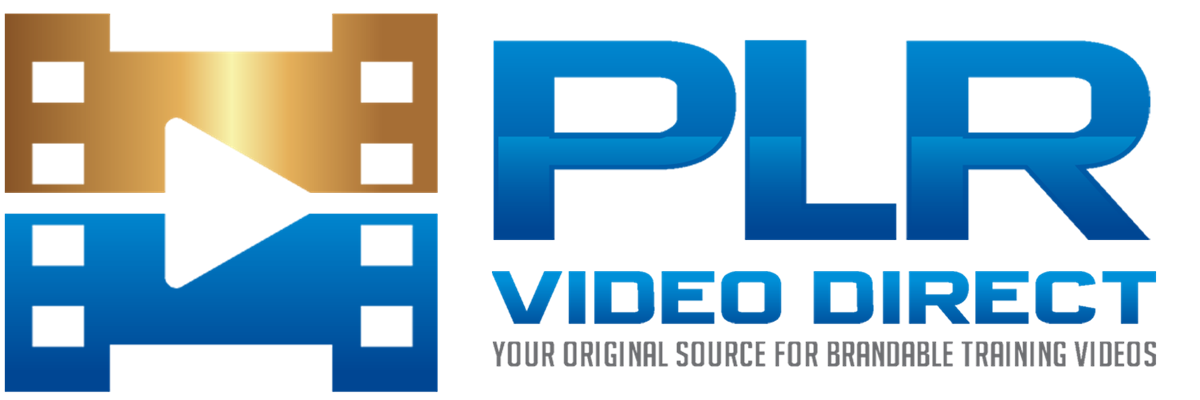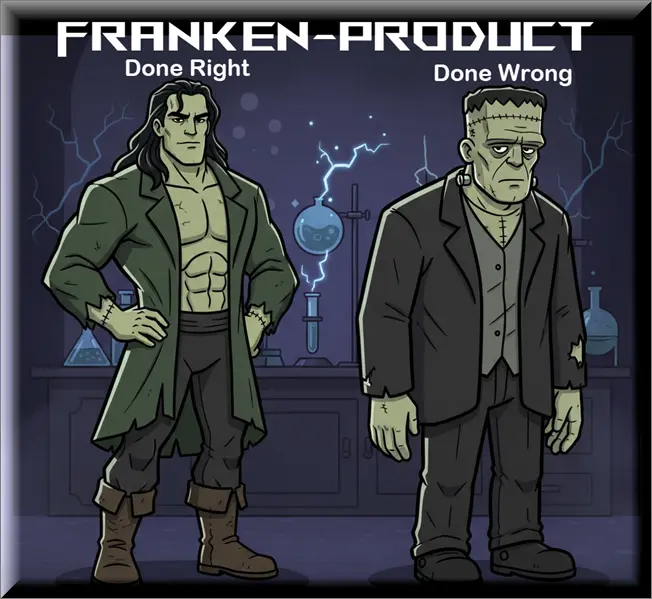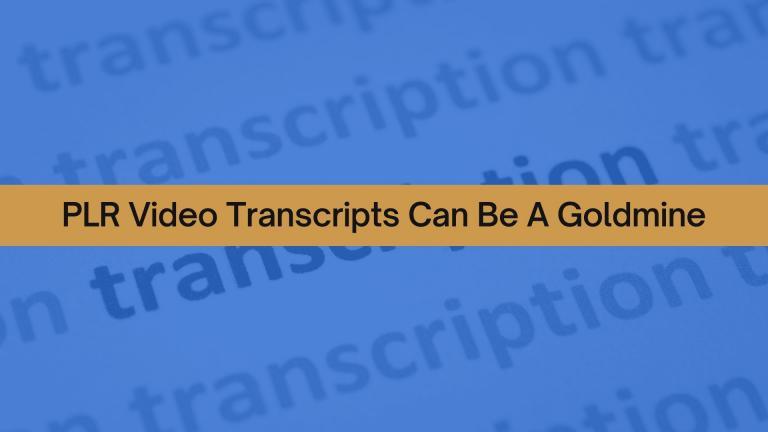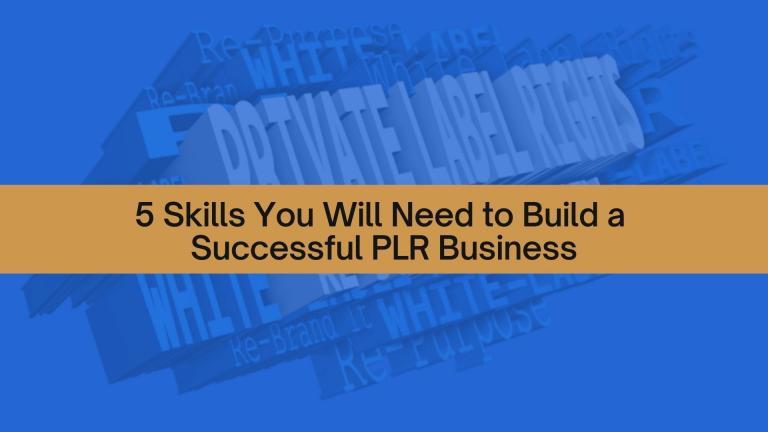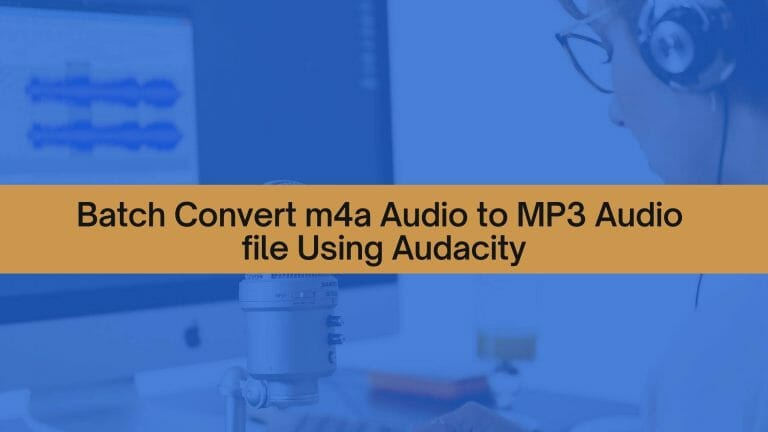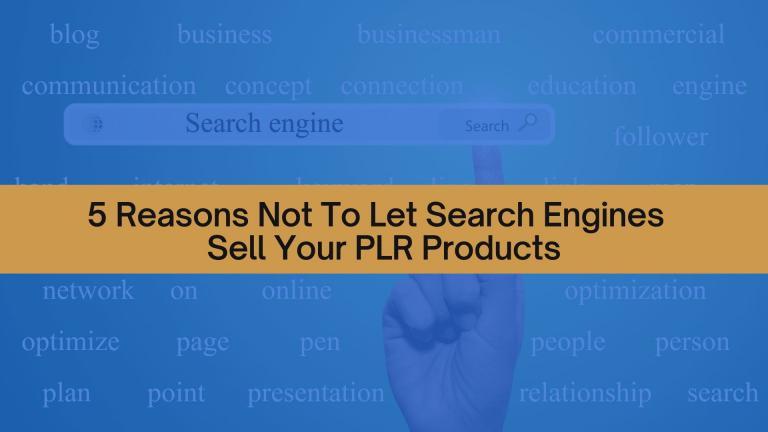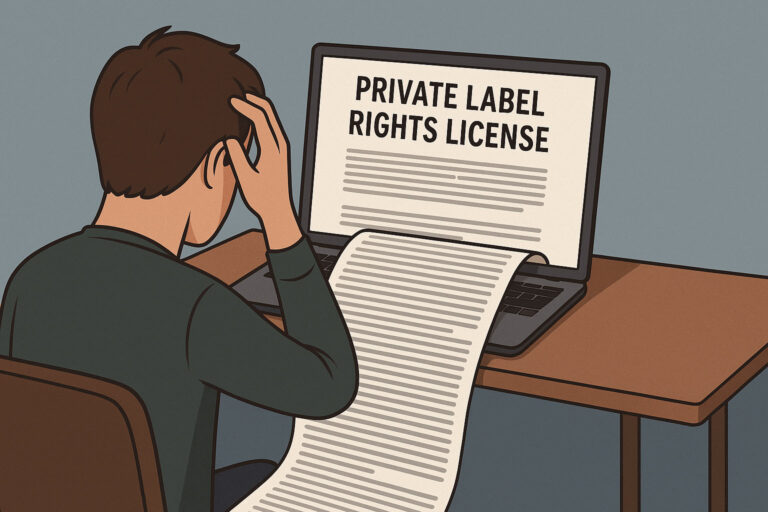How to Spark Life into Dead PLR Content With a High-Value “Franken-Product”
If your hard drive is a graveyard of PLR you meant to “get to later,” the issue isn’t your intention, it’s your approach. Basic PLR editing (swap the name, slap on a new cover, list for $7) puts you in a crowded aisle selling the same thing as everyone else. Strategic PLR editing fuses the best parts of several PLR assets into one original, premium offer, what I call a Franken-Product. This post shows you what to do to plan, curate, and package a unique product that stands out and sells. We’ll stay high-level on purpose; the detailed “how to” lives inside my mini-course.
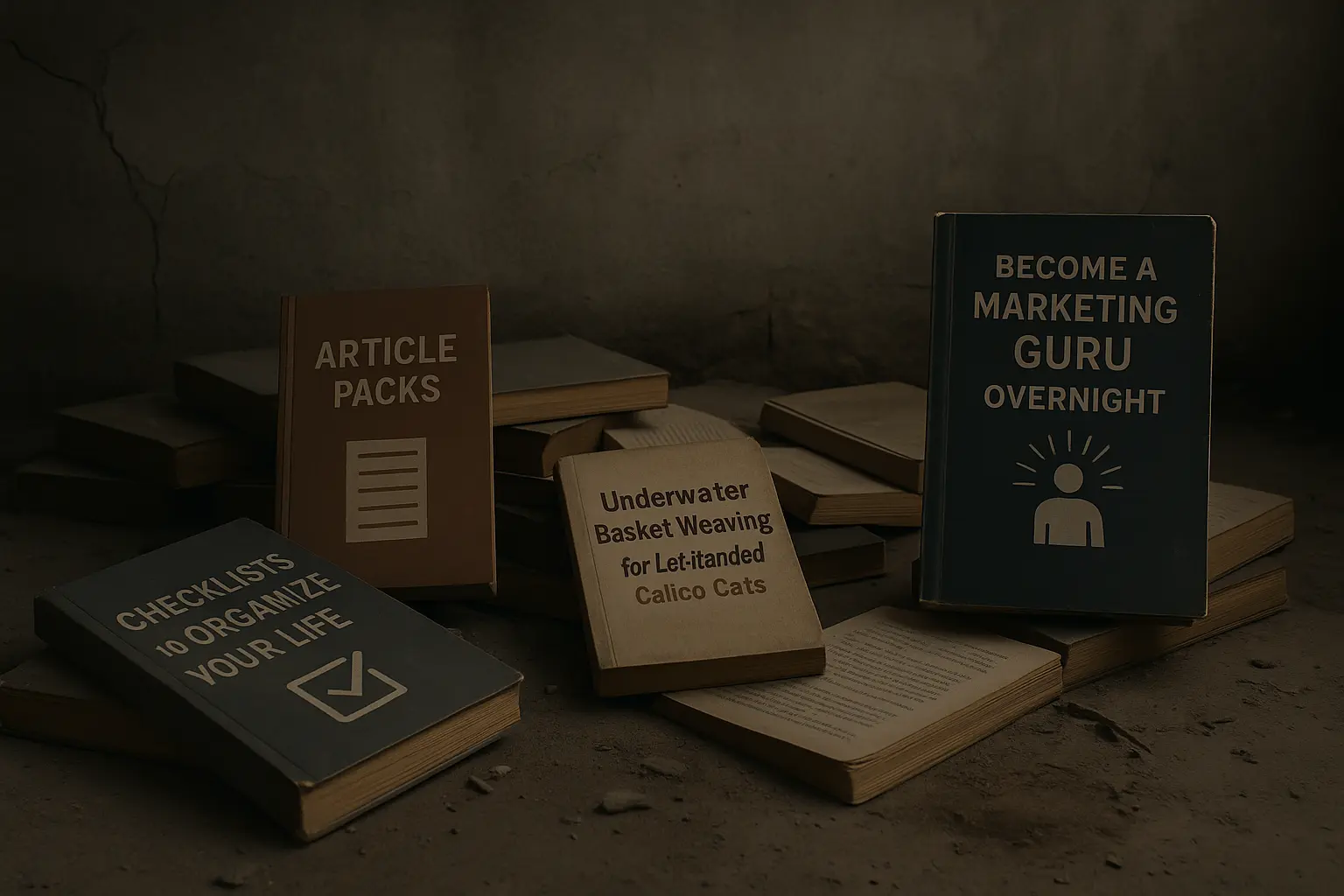
TL;DR
- Editing PLR that works starts with strategy, not software.
- Curate 3–5 complementary PLR assets around one tight theme and one outcome.
- Build your own blueprint before you open a single PLR file.
- Deconstruct PLR into usable ideas, then re-voice and fuse (‘stitch’) them into one coherent draft.
- Polish with professional design, action aids, and a clear offer stack; then pick a simple delivery platform.
- Want the step-by-step? Get the PLR Alchemy 5‑Part Mini‑Course.
Why basic PLR editing fails (and what to do instead)
Most PLR flops for predictable reasons. First, sameness. If 100 people bought the same ebook, “new cover, new name” doesn’t make it new. Second, weak positioning. “Mindfulness guide” is vague; “7-day stress reset for new managers” is a promise. Third, presentation. Sloppy formatting and outdated references erode trust fast. The fix: combine multiple PLR sources into a single, outcome-driven product with your structure, your voice, and clean packaging.
Do this instead:
- Blend and differentiate: Combine complementary PLR (ebook + articles + checklist + slides) into one unique solution.
- Promise one transformation: Build the entire product around a single, specific outcome for a specific reader.
- Earn perceived value: Clean design, current references, and practical bonuses beat a bloated PDF every time.
Who this is for (and how to read it)
- If you’re short on time: Use this post as a checklist for what to do at each stage. Start small, launch fast, iterate.
- If you’re new to this: Keep it simple. Follow the “one outcome, a few assets, clean delivery” idea and avoid tech rabbit holes.
The PLR Alchemy system: What to do (high-level view)
Step 1: Curate like a pro
Editing PLR starts before you edit anything. Pick a tight theme and a single promise your offer will deliver. Think “Beginner-friendly container gardening plan for small balconies,” not “Gardening.” Then gather a small set of high-quality PLR that naturally supports that journey.
Do this:
- Choose 3–5 complementary assets (e.g., a core ebook, an article pack, a checklist, a slide deck or scripts).
- Vet for clarity and currency; skip spun content and massive bargain bundles.
- Confirm each license allows editing, rebranding, bundling, and the distribution channel you plan to use.
Step 2: ‘Map’ Out your product before opening files
Don’t let a stock table of contents (TOC) dictate your product. Design your own blueprint based on the transformation you’re promising. When you control the structure, you control the experience and the price you can charge.
Do this:
- Write a one-sentence transformation and outline 3–5 modules that deliver it in a straight line.
- Decide your offer stack now: core guide/course + 1–2 action aids (workbook, checklist…) + 1 friction-removing bonus.
- Keep scope tight. Cut anything that doesn’t move the reader toward the promised outcome.
Step 3: Deconstruct PLR into usable parts
Now open the PLR, but you’re mining, not copy-pasting. Break assets down into ideas, tips, stats, examples, checklists, and frameworks. Sort those pieces into your blueprint. You’re matching their content to your structure, not the other way around.
Do this:
- Extract and sort “atomic” (the good bits) pieces (paragraphs, bullets, examples) by module/topic.
- Flag gaps where you’ll add your own insights or a brief explainer.
- Note tone clashes and stale references for rewriting or replacement.
Step 4: Fuse and re-voice into one cohesive draft
This is where the magic (and the value) happens. Rewrite in your voice so it reads like one author. Add short transitions so ideas flow. Update old references and add your perspective where the PLR is generic or timid. Keep the writing simple, specific, and useful.
Do this:
- Re-voice every borrowed line so it sounds like you, clear, conversational, confident.
- Bridge sections with quick intros, transitions, and recaps so it doesn’t feel stitched.
- Replace outdated tools/stats and swap generic examples for ones your readers actually recognize.
Step 5: Enhance the delivery and presentation
Perceived value is real. A clean, consistent look and helpful implementation aids separate premium from “meh.” Package the content so it’s easy to consume and act on. Then pick a delivery platform that won’t become a second job.
Do this:
- Invest in clean design: consistent headers, readable typography, branded colors, simple covers.
- Add action accelerators: checklists, worksheets, templates, summary cards, quick-start guides.
- Choose where buyers will access it: a clean download page for guides/printables, or a simple course platform for multi‑module content and videos (WordPress, Gumroad, ThriveCart…).
Positioning and pricing: What to do before you put a Price-tag on it
Good editing can’t rescue weak positioning. Define the transformation in one simple sentence: who it’s for, the result they get, and what you help them avoid. Then align your bonuses and price with that promise. You’re not selling ‘pages’ you’re selling outcomes.
Do this:
- Write one line that sells the result: “Go from X to Y in Z timeframe, without [big obstacle].”
- Anchor value in the outcome and implementation aids, not word count.
- Decide where it sits in your product ladder (front-end vs. flagship) so your price makes sense.
A quick example to make it real
Theme: Organic container gardening for small spaces
The idea: Help beginners set up, plant, and care for a balcony garden without fancy gear or a yard.
What to curate:
- Core ebook: soil and container basics (PLR)
- Articles: pest control, watering mistakes, light/placement (PLR)
- Checklist: seasonal planting plan (PLR)
- Slide deck: composting 101 (PLR)
How to blueprint:
- Module 1: Setup (containers, soil mixes, drainage, placement)
- Module 2: Plant & Place (light, spacing, seasonal plan)
- Module 3: Grow & Protect (watering, feeding, pests)
- Module 4: Sustain (simple composting, seed saving)
- Bonuses: “7 Fail-Safe Container Layouts,” “Weekly Care Card,” “30-Minute Balcony Prep”
How to enhance:
- Use a simple cover with a big, clear photo behind the title. The photo should match the topic (e.g., a small balcony garden). Make the title large and easy to read.
- Keep all pages consistent: same fonts, colors, and spacing throughout.
- Add printable checklists and one-page cheat sheets people can use while they work.
- Record 2–3 short videos (under 3 minutes) to explain the trickiest parts.
- Share it in a simple way: a download page for PDFs, or a basic course page with logins for videos and modules.
Legal and ethical quick checks for PLR editing
You don’t need a law degree, just a few disciplined checks. Licenses vary. Read them. When in doubt, skip it.
Do this:
- Verify rights: You need Private Label Rights that allow some type of editing, rebranding, and reselling. Some licenses restrict KDP, paid ads, or specific marketplaces, so obey those.
- Handle attribution properly: Add it if required; remove original branding if permitted.
- Avoid risky claims: Skip medical/financial guarantees; add appropriate disclaimers where needed.
- Respect trademarks: Don’t feature logos or endorsements you don’t have permission to use.
Tool stack
Tools don’t create strategy; they support it. Choose simple, reliable options and keep your stack light.
Use tools to:
- Plan and organize: Notion or Google Docs for outlines and asset tracking.
- Clean the draft: Grammarly for typos/tone; Hemingway-style simplification for clarity.
- Check originality: Originality.ai or Copyscape to ensure your re-voiced draft isn’t overly similar.
- Package it: Canva for covers, worksheets, slides; a dependable PDF export.
- Deliver it: Gumroad or SendOwl for downloads; Podia, ThriveCart Learn+, or Teachable for courses.
Pitfalls to avoid (save yourself the rework)
- Overstuffing: More assets ≠ more value. Include only what advances the promise.
- Style collisions: Mixed tones without a rewrite feel stitched and cheap. Aim for one voice.
- Outdated info: Old tools/stats erode trust. Replace or cut them.
- License blind spots: Each asset has its own rules. Check them all.
FAQ: Quick answers about editing PLR
Is editing PLR enough to make it unique?
Editing is the starting line. Re-voicing, restructuring, and adding your perspective and examples is what makes it original and valuable.
Can I combine PLR from different sellers?
Usually, yes, if each license allows editing and bundling. Treat each asset’s license as its own contract.
How many PLR pieces should I merge?
Start with 3–5 complementary assets. Add more only if they improve clarity or remove friction for the buyer.
Will I get penalized for duplicate content?
If you heavily re-voice, restructure, and add new content, you’re not publishing duplicate content. Don’t publish stock PLR as-is, especially on public pages.
How should I price a Franken-Product?
Price the transformation, the completeness of the offer, and the audience’s willingness to pay. Tight, outcome-driven guides with strong action aids can command mid-tier pricing; multi-module courses with media and bonuses can go higher. Test and adjust.
When to launch
Don’t wait for perfect. Build the right-sized version, make it clean, and ship. You can iterate on bonuses and media after you have a version 1 in the wild. A polished, 80% complete solution that solves a clear problem beats a 300-page draft marinating on your desktop.
Your next step
Now that you have the ‘What To Do,’ you can likely figure out the shortcuts and editing tricks as you go along, but if you want to hit the ground running, then you can get the step-by-step five-part over-the-shoulder style video training called PLR Alchemy. It’s my no geek-speak, just a clear path from idea to finished Franken-Product. I include the AI prompts I used in the videos, separate audio (mp3) files and the transcripts. The video training comes with PLR for those who want to use it to train others and reap a higher ROI.
So here’s your homework:
- Go through your existing PLR collection and identify 3-5 pieces that could work together around a single theme
- Create your blueprint before you touch a single PLR file
- Start small with your first Franken-Product (don’t try to create a 300-page masterpiece right out of the gate)
- Focus on solving one specific problem for one specific type of person
Remember, you’re not just creating products anymore. You’re creating solutions. You’re taking the best ideas from multiple sources and combining them into something that genuinely helps people.
And when your customers start leaving reviews saying things like “This changed everything for me” and “I can’t believe how comprehensive this is,” you’ll know you’ve mastered the art of PLR Alchemy.
Now stop reading and go create something amazing. Your digital laboratory awaits.
